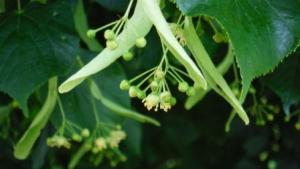Tree Facts – Common Lime trees at Compton Verney
Welcome to a page of the Compton Verney Landscape Garden blog, featuring a Fact Sheet for our Common Lime trees.
Plant name:
Tilia x europaea (synonym: Tilia x vulgaris)
Commonly known as:
Common Lime or Linden Tree
Origin:
Europe
Description:
A deciduous tree up to 40m tall. Bark is generally smooth and grey. Masses of sucker growth appear from the base, then again at around 3m high. Leaves are broadly heart shaped and shiny. Limes feature fragrant bee pollinated flowers alongside bracts in early summer. The bracts or keys that accompany the flowers are yellow in colour and help the tiny nut-like fruits disperse further from the parent tree in autumn.
Information:
Lime trees are found in one particular location at Compton Verney, between the west lawn and south front, planted in a ‘U’ shaped formation. The trees date from both the eighteenth and nineteenth century, indeed a late 18th century path around the west lawn is known to cut through the plantation.
It is no happy accident that the ‘open’ end of this lime grouping faces towards the Georgian chapel, which sits to the north slightly above the mansion. However, it is believed that these limes act primarily to break landscape views both from the mansion and to the mansion from points in the landscape.
All except one of the limes have been pollarded (high level pruning/crown reduction) over the last decade or so, and the bases are pruned regularly to enable both adequate tree health inspections and prevent sucker growth from taking over. The superb cathedral-like space beneath the lime trees is home to an established colony of Winter Aconites, or Eranthis hyemalis, which look stunning through January into February.
Interesting Facts:
- Common Lime is believed to be a cross between the small leaved lime (Tilia cordata,) and the large leaved lime (Tilia platyphyllos).
- Common lime is noticeable by its many shoots or suckers that sprout from the base of the trunk.
- Lime tree wood is light, close grained and intricate designs can be carved for decorative purposes. Lime wood was the material of choice for the late 17th / early 18th century Dutch wood carver Grinling Gibbons, who gained commissions in places such as Chatsworth, Blenheim Palace and Hampton Court.
- Limes were planted in their thousands at estates, and in gardens around Europe, in part due to their ease of propagation (from those many suckers!) but also for their toleration of pleaching, or high level hedge-like trimming which was popular in the formal design period at the turn of the eighteenth century. Compton Verney has evidence of a formal garden layout of the same period.
- Lime trees are very attractive to insects, especially bees. Aphids, or greenfly are in particular drawn to lime trees and their secretions fall, coating everything below with sticky ‘honeydew’.
- Despite its common name, the tree is not the source of the Lime fruit, which comes from Citrus plants.
- ‘Bast’, the fibres of the inner bark are strong and elastic when stripped and have been used in past times to make string and rope products.
- Lime trees can be processed in many ways, and have been used medicinally for centuries to remedy gastric ailments and ease hysteria symptoms.
- And finally, lime tree branches have been traditionally coppiced as fodder for cattle, who graze on the foliage – this improves their milk.
Other tree fact sheets available:
Sources:
The Living Wisdom of Trees, Fred Hageneder
The Trees that Made Britain – Archie Miles
Wikipedia – Tilia x europaea
Wikipedia – Grinling Gibbons






